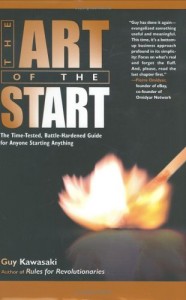At the ripe old age of 33, Josh Kopelman is already a master at building – and exiting – startups. He’s helped start three very successful business ventures, all of which have either gone public or been sold for tidy profits.
Josh’s track record certainly demonstrates his innate business sense. In this issue, Josh gives us some insight on his own entrepreneurial success factors. We hope you can apply some of these learnings to your own business ventures.
We are always eager to hear from you. Send us your thoughts on this issue or future Insights suggestions to insights@antiphony.com
Five Rules of Investing for Success
 Josh Kopelman, Entrepreneur While still an undergraduate at Wharton, Josh cofounded Infonautics Corporation with entrepreneur Marvin Weinberger. In 1996, Infonautics went public on the NASDAQ stock exchange. Josh left Infonautics to found Half.com in July of 1999, and led it to become one of the largest sellers of used books, movies and music in the world. Half.com was acquired by eBay in July 2000 in a stock deal valued at the time at more than $300 million — and Josh remained with eBay for three years, running the Half.com business unit and growing eBay’s Media marketplace to almost half a billion dollars in annual gross merchandise sales.
Josh Kopelman, Entrepreneur While still an undergraduate at Wharton, Josh cofounded Infonautics Corporation with entrepreneur Marvin Weinberger. In 1996, Infonautics went public on the NASDAQ stock exchange. Josh left Infonautics to found Half.com in July of 1999, and led it to become one of the largest sellers of used books, movies and music in the world. Half.com was acquired by eBay in July 2000 in a stock deal valued at the time at more than $300 million — and Josh remained with eBay for three years, running the Half.com business unit and growing eBay’s Media marketplace to almost half a billion dollars in annual gross merchandise sales.
In early 2004 Josh helped to found TurnTide, an anti-spam company that had created the world’s first anti-spam router. TurnTide was acquired by Symantec just six months later for an estimated $28 million.
Over the last several years I’ve made several angel investments in high-technology companies. To help me quickly screen through prospects, I’ve come up with a short list of success factors to rely on when considering new investments.
- Reduced Market-Acceptance Risk When I was at Wharton, I remember learning that successful entrepreneurs try to find a new, untapped or underserved market. I disagree. I think the markets are extremely efficient – and there are so many smart entrepreneurs out there – so that if a market segment is “untapped” or “underserved”, there typically is a reason why. That’s why I try to find companies that offer a unique solution in an already large space -preferably in a frothy market where there’s already lots of money and where “pain” is evident. In 1999 the fastest growing space on the Internet was e-commerce – and the biggest segment was books. Hence, Half.com addressed that market with a unique solution. In 2004 spam was quickly becoming one of the top-three problems facing CIO’s – and billions of dollars were being spent to eliminate it. That’s why I was so excited when Lucinda Duncalfe Holt introduced me to the TurnTide technology – because it provided a unique solution to a very large problem.
There are always risks in startup companies – technology risk, execution risk, financing risk, etc – but the risk I fear the most is market acceptance risk. By focusing on large, existing problems I hope to mitigate this risk. And if you are able to provide a unique solution, it increases the odds of a successful exit. When I find a great opportunity, I like to be the first money in – I’m not afraid of investing in pre- revenue companies.
- Stick to what I know I tend to focus on companies and markets where I have a strong experience base and ability to add value. I reject more deals for this reason than any other. By only investing in what I know, it makes it much easier to evaluate a business concept — I already have a clear understanding of the marketplace, competition and the financial dynamics of the industry. I also value simplicity and clarity – if it takes more than 5 minutes to get me excited about your business, you might be trying to do too many things.
- Unique Business Model I look for companies that are able to leverage advances in distribution, technology or marketing to change industry economics or invent a new business model. I especially love investing in technologies and business models that are able to shrink existing markets – Microsoft did this extremely effectively to the encyclopedia industry with Encarta…and Half.com did the same thing to the publishing industry. If your company can take $5 of revenue from a competitor for every $1 you earn – let’s talk!
- Pull versus Push Marketing From a marketing perspective, I look for companies that are at a point of persuasion, not education – that use a “pull” versus push strategy for new products. It’s really too difficult to educate a market or to try to change consumer behavior. I also think the marketing plan should be as creative as the product. Take our marketing strategy for Half.com. Mark Hughes and I worked together to convince Halfway, Oregon to rename itself Half.com as a marketing stunt. When they agreed, it instantly gave Half.com national publicity. Too many companies treat marketing and sales as a tactical afterthought. I believe marketing is strategic and seek companies that are marketing focused – with marketing requirements driving product development.
- Experienced Leadership Beginners make a lot of mistakes. I spend a lot of time advising and mentoring first-time entrepreneurs – but I don’t invest in them. (I call that tuition – not investment). The odds of success are much more in your favor as an investor with second-time entrepreneurs. Second-time entrepreneurs bear the scars of their first venture – and have learned their job on someone else’s dime.
The Best Way Forward Is to Work Backwards
Rob Weber, Antiphony
rweber@antiphony.com
Entrepreneurs are often asked by investors about their exit strategies, yet few offer credible, defensible responses. But the fact is, the exit strategy is the primary driver of current value for the entrepreneur and can completely shape discussions with current and potential investors. It is the job of the entrepreneur to continuously understand and assess the landscape of potential acquirers — usually by investigating their company’s value chain — and to direct milestones toward those actions that create value in the eyes of the next owner.
Action
Pick a date in the future, say three to five years from now, and envision putting your company up for sale. Ask yourself the following questions:
- Who are the potential buyers?
- How do they assign value to their acquisitions?
- What factors are compelling them to acquire firms like yours?
- Where will they be able to take your company once acquired (products, markets, channels, etc.)?
- How much do you want to make out of the sale?
The answers to these questions become your lighthouse. Point your business in this direction, and look at the gaps between where you are now and where you need to be. From there, developing a tangible, actionable plan becomes a straightforward exercise. Build in key metrics to track performance, and you are on your way to success.
To learn more about exit strategies, contact us atinsights@antiphony.com
Recommended Reading
 The Art of the Start
The Art of the Start
Guy Kawasaki (ISBN: 1591840562)
This book, just out in September 2004, is a practical how-to for all innovators who want to grow their businesses. Kawasaki provides readers with Great Ideas for Starting Things-including his field-tested insider’s techniques for bootstrapping, branding, networking, recruiting, pitching, and rainmaking.
